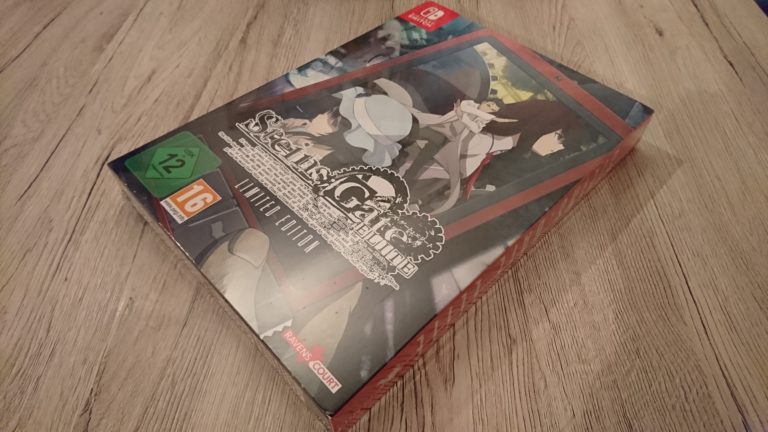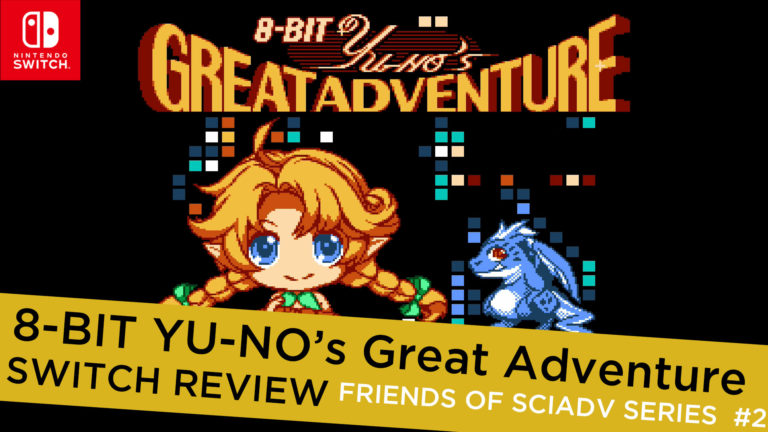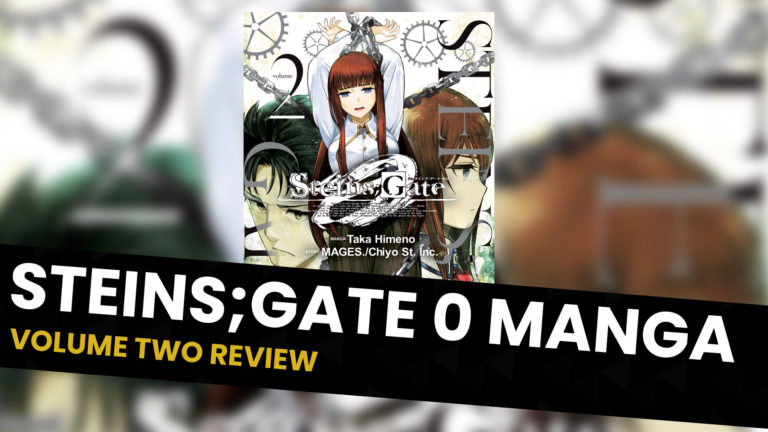When Steins;Gate was initially released for Japanese audiences in 2009, it was met with great critical and commercial success. Almost ten years later, the visual novel is receiving a brand new remake titled Steins;Gate Elite. This rerelease aims to combine the animated visuals from the highly popular anime adaptation with the story of the original game to provide an improved, elite experience.
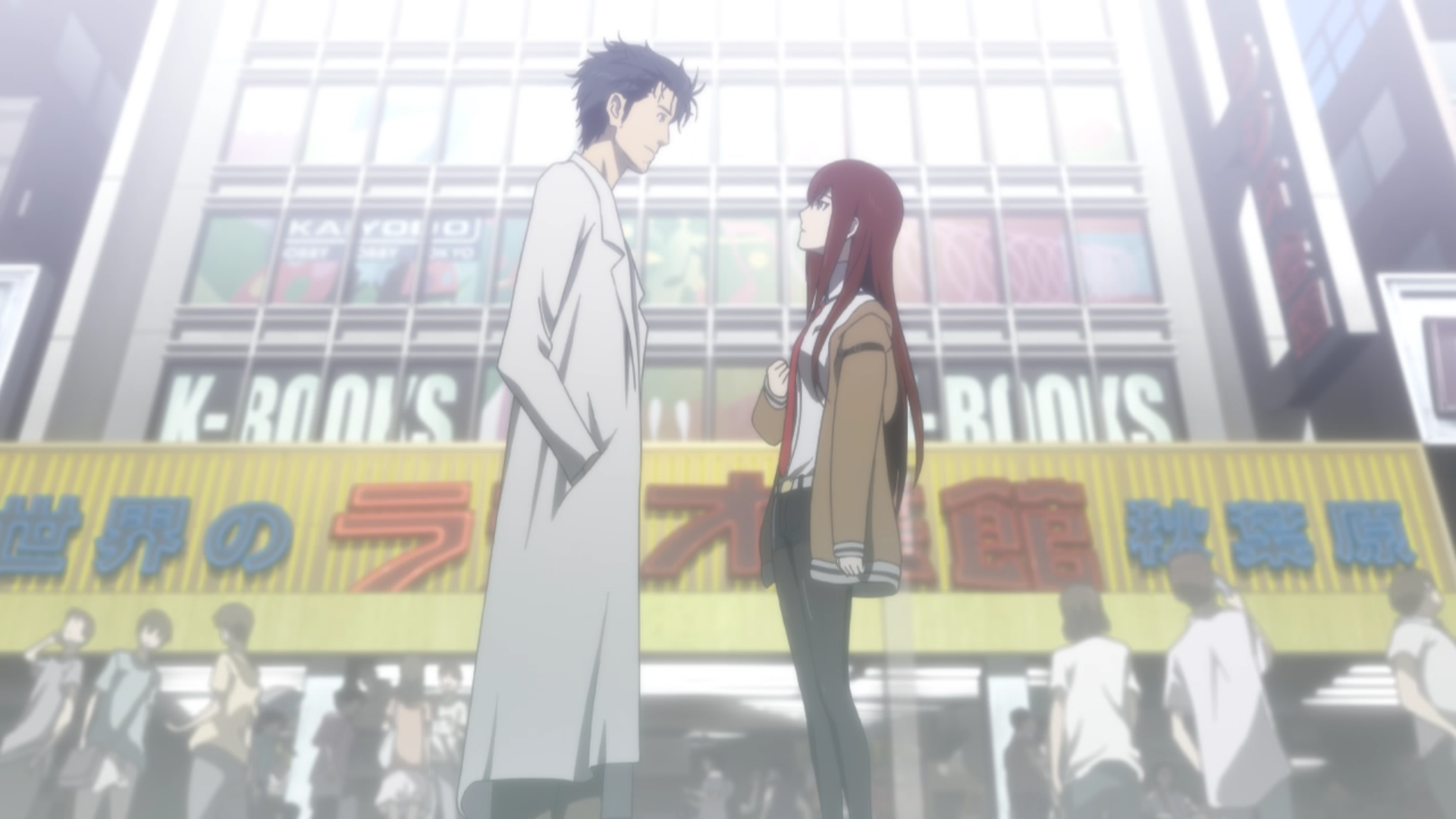
Steins;Gate Elite will receive an official English release on February 19, 2019. The publishers, Spike Chunsoft, graciously provided us with copies of this game as well as Steins;Gate: Linear Bounded Phenogram and Steins;Gate: 8-BIT ADV to review. In the following article, we will attempt to weigh in on the following question: Does Steins;Gate Elite live up to its name, and is it the ultimate way to experience Steins;Gate?
Four members of our staff will be covering their thoughts on the game in the following review, and each member will give the game a score out of 10 at the end of the article. These scores will be added together and divided by 4 to provide a final, collective score out of 10.
The members reviewing this game are Martin, Fasty, Yink, and DaSH. Without further ado, let’s get into it!
STORY
Fasty:
Steins;Gate has been around for almost ten years now, but its premise is just as captivating now as it was in 2009. A group of teenagers, members of the makeshift “Future Gadget Laboratory”, discover that their microwave has the uncanny ability to send emails back in time to their phones in the past. The group, led by self-proclaimed mad scientist Okabe Rintaro, begins to conduct experiments with these emails that change the past, and therefore, the present and the future. What isn’t immediately obvious to them is that messing around with time is dangerous, and abusing their newfound discovery can lead to disastrous consequences.
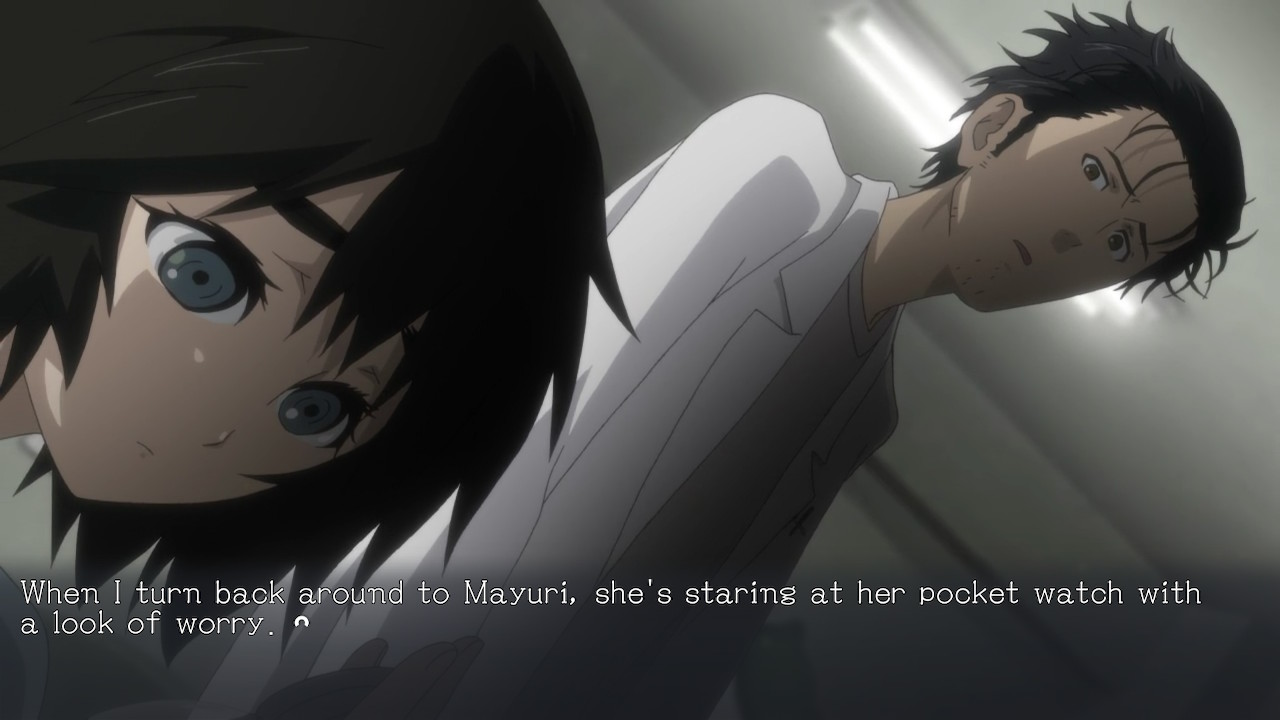
Steins;Gate is part of the Science Adventure series of visual novels, and it wouldn’t be a stretch to call it one of the best visual novels ever written. Its plot structure is commonly described as intriguing, scientific, and light-hearted in the first half of the story for the sake of character development and world-building. The second half of the story is where things truly pick up, putting the player through an emotional wild ride full of twists and turns that they won’t want to leave until its satisfying and powerful conclusion.
One of Steins;Gate’s strong suits is its characters. Okabe is joined by eccentric characters such as a talented hacker, a young girl genius, a girl that enjoys creating cosplay outfits, a spunky part-timer, and many more. These characters all have their own motivations that drive them, and over the course of the story, Okabe comes to learn about and connect with each of them.
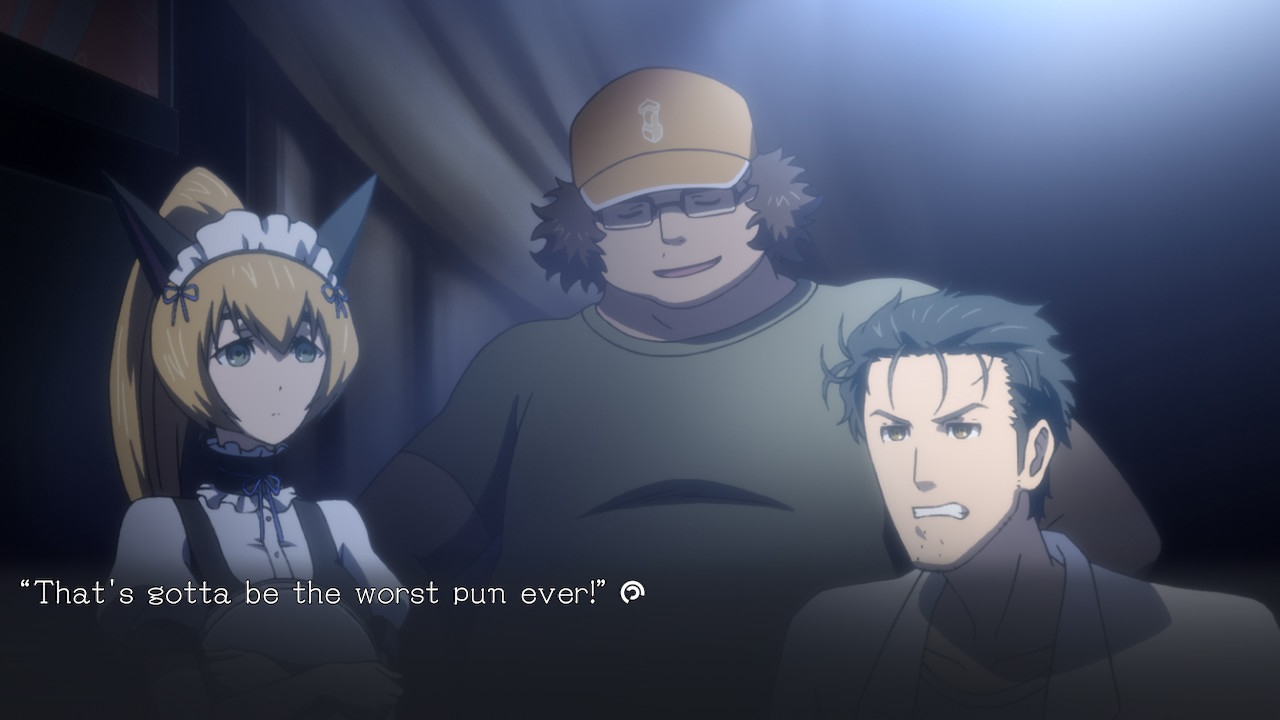
To put it lightly, Steins;Gate is one of the best sci-fi stories out there, as proven by its immense, long-standing popularity. As it stands, Steins;Gate Elite is a great way for old fans and potential new fans to experience the story.
Yink:
Steins;Gate does not really have “side routes” in the style of most other visual novels (For example, Chaos;Child). Instead, there are several points in the story where the player can make an important decision, thereby controlling whether they continue on with the main story or branch out into character-specific endings. Steins;Gate Elite—just like the original visual novel—has 6 of these character endings that allow the player to take a look into a different future and see how things might have gone differently.
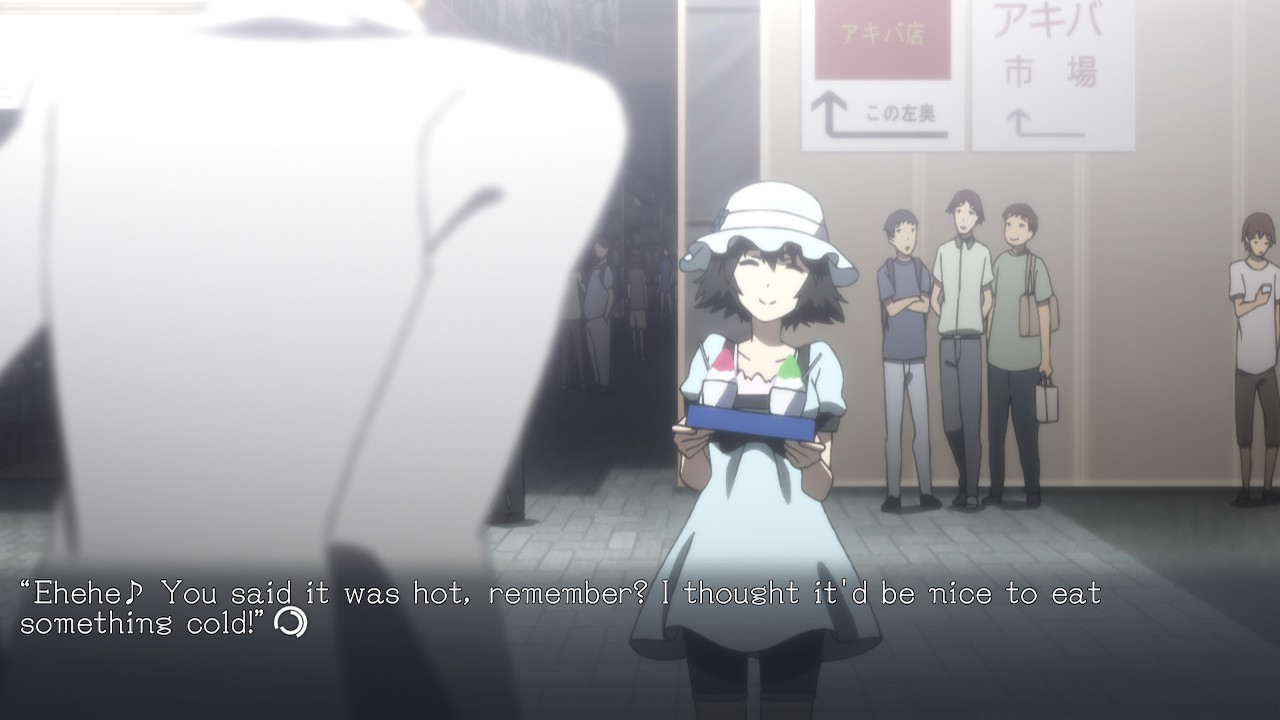
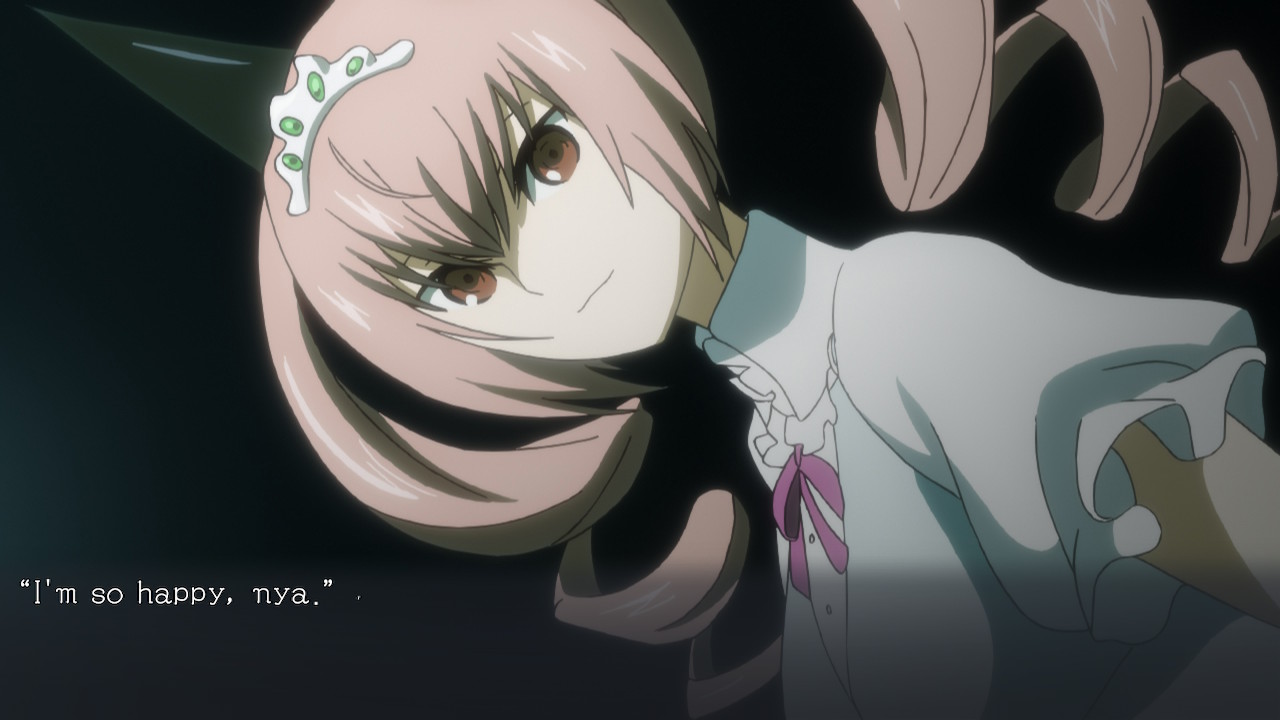
Conceptually, I think this is a great idea for a game like Steins;Gate, a game that’s all about different worldlines and different possible futures. While some routes include some amazingly emotional moments with the relevant characters, most are largely irrelevant to the main story and can be considered “what-ifs”. It’s even possible to ignore them without losing understanding of the main story at all. Without spoiling it however, I can say that the first ending that most players will get is really quite interesting!
PRESENTATION
Martin:
The main selling point of this game is that it’s animated. In contrast to most traditional visual novels, Elite is fully animated thanks to the already existing animations from the awesome anime adaptation. The anime adaptation didn’t cover every aspect of the visual novel, which is why the game introduces some brand new animated scenes from the same studio that worked on the anime adaptation, White Fox. Replaying the original visual novel with animation is like a brand new experience, it’s like seeing the game come to life. Notably, the game’s character routes are all newly animated for this release.
The game also features a new opening song and animation titled “Cosmic Looper”, sung by the illustrious Kanako Itou. A new ending song called “Annie’s ring” was also introduced in Elite, and it’s sung by Yui Sakakibara, also known as FES in-universe.
Oddly, the English ending credits contain quite a few strange typos. These typos were present in the original Japanese version of the game as well, and the fact that they couldn’t be addressed is unfortunate.
Yink: Coming from the anime, it’s amazing to finally see fully animated side routes, and that’s one of the main draws that the game has for series veterans. Thankfully, the most interesting route has been adapted really well for Elite, and it captures the emotional tone and atmosphere of the original game’s route really well.
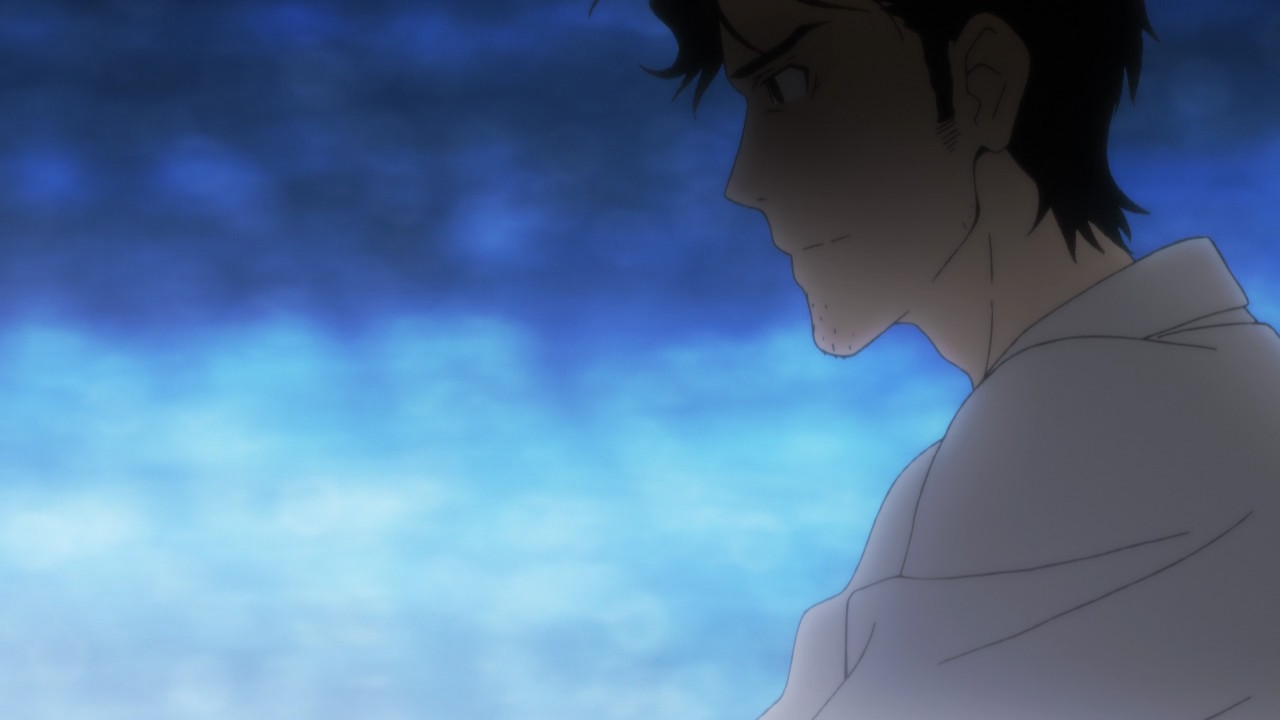
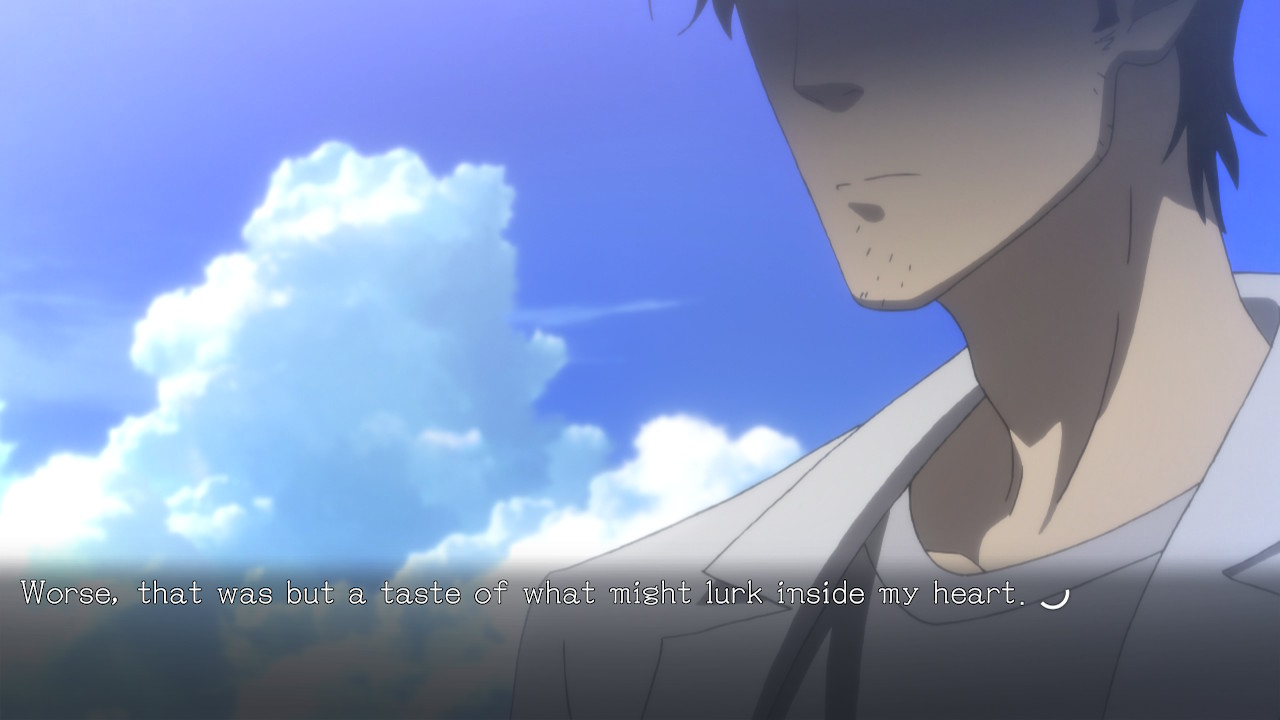
However, some other routes are arguably quite mediocre in their animation quality in comparison. This is understandable given the budget that is required to produce anime episodes, but it can still be slightly disappointing if one expects the animation to be on par with the Steins;Gate anime.
DaSH:
As the others have focused mainly on the visual side, I’ll focus on the audio side. As Martin mentioned, Steins;Gate Elite features a new opening song by Kanako Itou, and a new normal ending song by Yui Sakakibara/FES. The opening song is the first Science Adventure-related song to be sung entirely in English, and generally lives up to the standards I’ve come to expect from Science Adventure songs. I could even argue that it’s my favorite Steins;Gate opening song thus far, which is no small feat—it’s up against some tough competition.
The ending song, “Annie’s ring”, is also definitely up there as one of my favourite Phantasm songs, alongside Gladioul and Vanitas of the Lunar Eclipse.
Regarding the in-game soundtrack and audio presentation, the soundtrack is mostly the same score we know and love from the original. I feel as though it might have been very slightly remixed from the original, which is a nice touch—at times, I could have sworn there were small changes to the instruments featured.
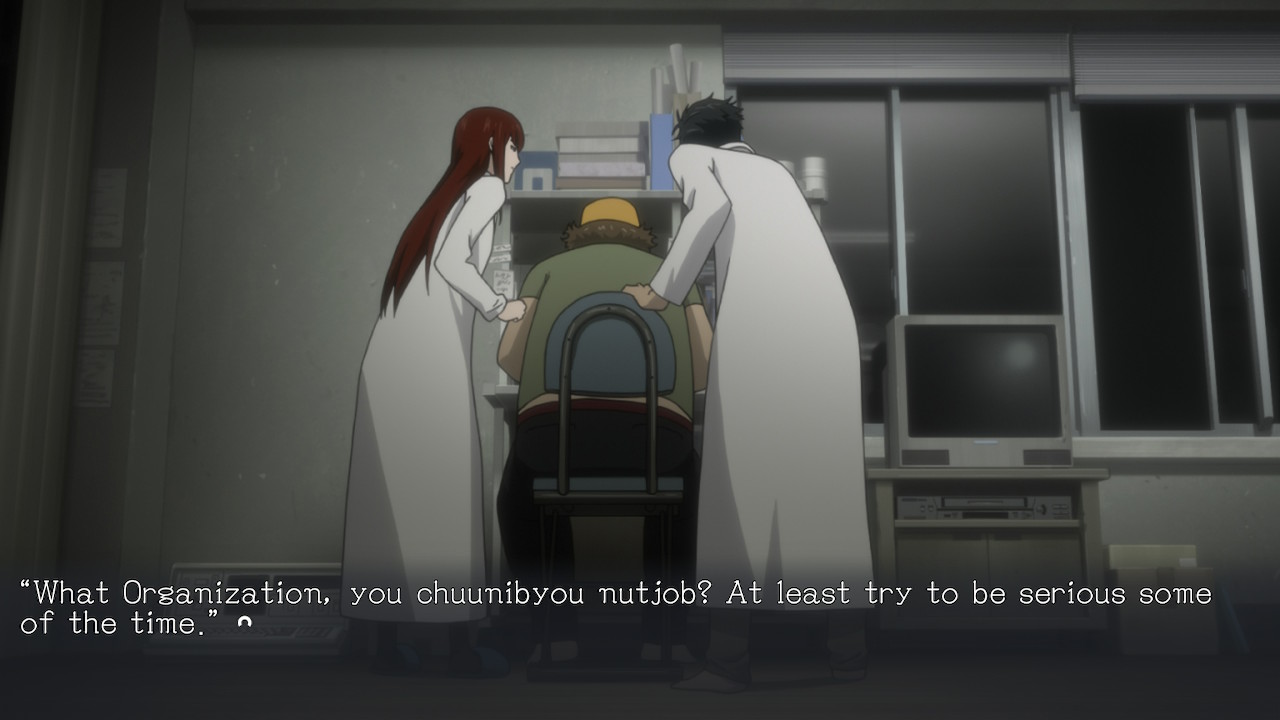
The audio presentation is also, for the most part, up to snuff. It features added and changed sound effects, such as some sound effects being modified for loop-ability. Running sound effects for example, which were short and to the point in the original, have been changed so that they can loop alongside scenes where running animations are looped. New sounds for keyboard typing were introduced for scenes where lab members use the computer, which is a nice addition.
Some sound effects do stay the same though. Notably, the time leap sound effect and the worldline shift sound effect remain the same, which is a bit jarring at times since they’re matched with the anime versions of the animations instead the visual novel animations.
GAMEPLAY
Martin:
The gameplay here is pretty standard for a visual novel, though it’s spiced up through the “Phone Trigger” system, which allows the player to read and reply to emails. This system allows the player to receive certain achievements and reach certain routes depending on the message. The player also has to make decisions at the end of certain chapters that can lead to different endings as well.
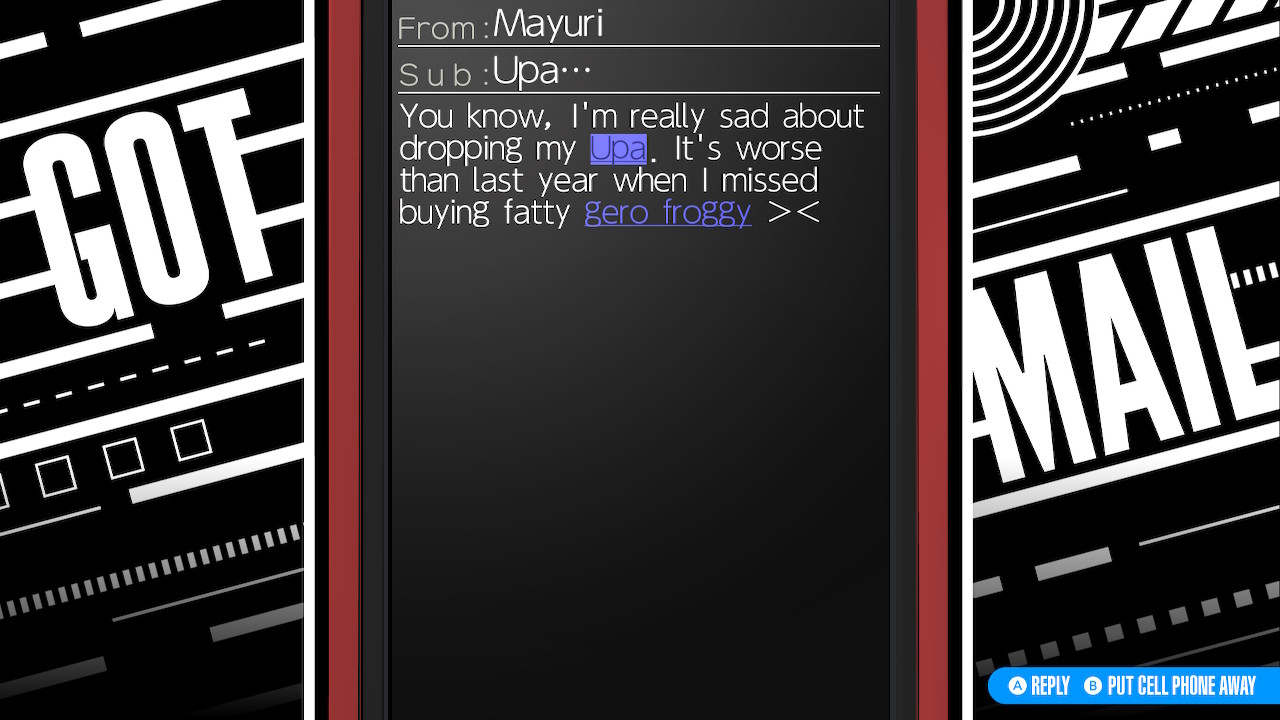
These functions are largely the same as in the original visual novel, but the phone feature has seen quite the downgrade. The player’s phone will only show up at certain moments, and the player can only use it to reply to emails. The player can no longer change wallpapers, set ringtones, or even call other characters at certain points. This leads to many achievements from the original game being cut out of Elite. Despite the changes to the phone, all true ending flags remain the same as in the original game.
DaSH:
Another notable gameplay change is the “@channel” message board, a prominent feature in all Science Adventure games. @channel has been completely revamped in Elite, and threads have been greatly expanded with many new added posts in comparison to the original game. While the original game’s @channel only showed excerpts of threads featuring only the most important parts as well as a few replies, Elite typically features large portions of each thread in the game. @channel in Elite is definitely one of the most realistic takes on internet forums I’ve seen so far, with its posts of every type from every kind of user.
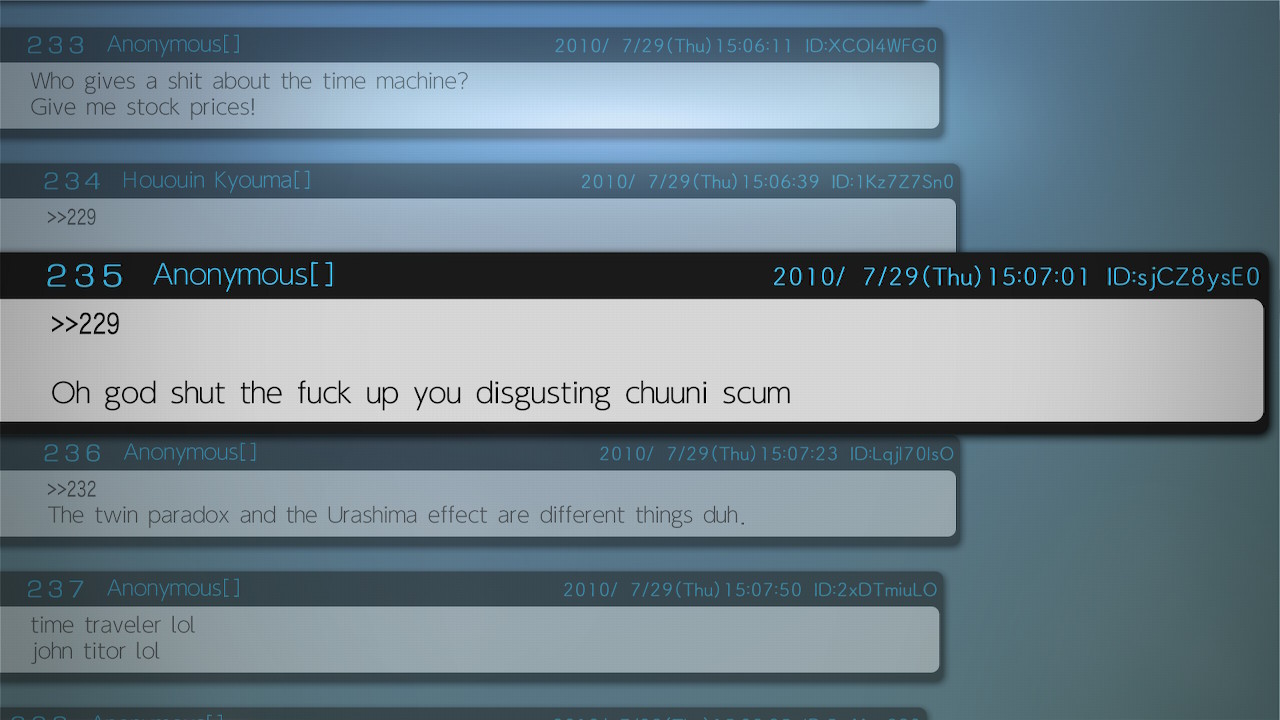
FINAL THOUGHTS
DaSH:
UPDATE: Spike Chunsoft has fixed the bug that was causing me issues. My score has been changed to fit this.
My personal experience with Steins;Gate Elite has been rather problematic in terms of technical issues. The game’s prologue had gamebreaking bug on the Steam version, and I had to play through the rest of the game through the Nintendo Switch version instead. This bug appears quite early on in the prologue, and I’ve tried getting past it with many different PC configurations to no avail. Notably, another team member ran into this bug while trying to play the game on their laptop—none of the other team members have had the same issue on their main PCs.
I noted a few more (minor) issues in the Switch version of the game, such as a few misformatted CGs. I’m not sure if this is an issue in general, or if it’s an issue with my download. Regardless, my experience with the Switch version has been mostly positive.
Overall, despite technical shortcomings, I’ve quite enjoyed my time with the VN. I do think it’s a valid way to experience the story, and it does bring some new elements to the table compared to the original. For example, Suzuha’s route is very well animated and executed. Elite does fall short on a few other points, however.
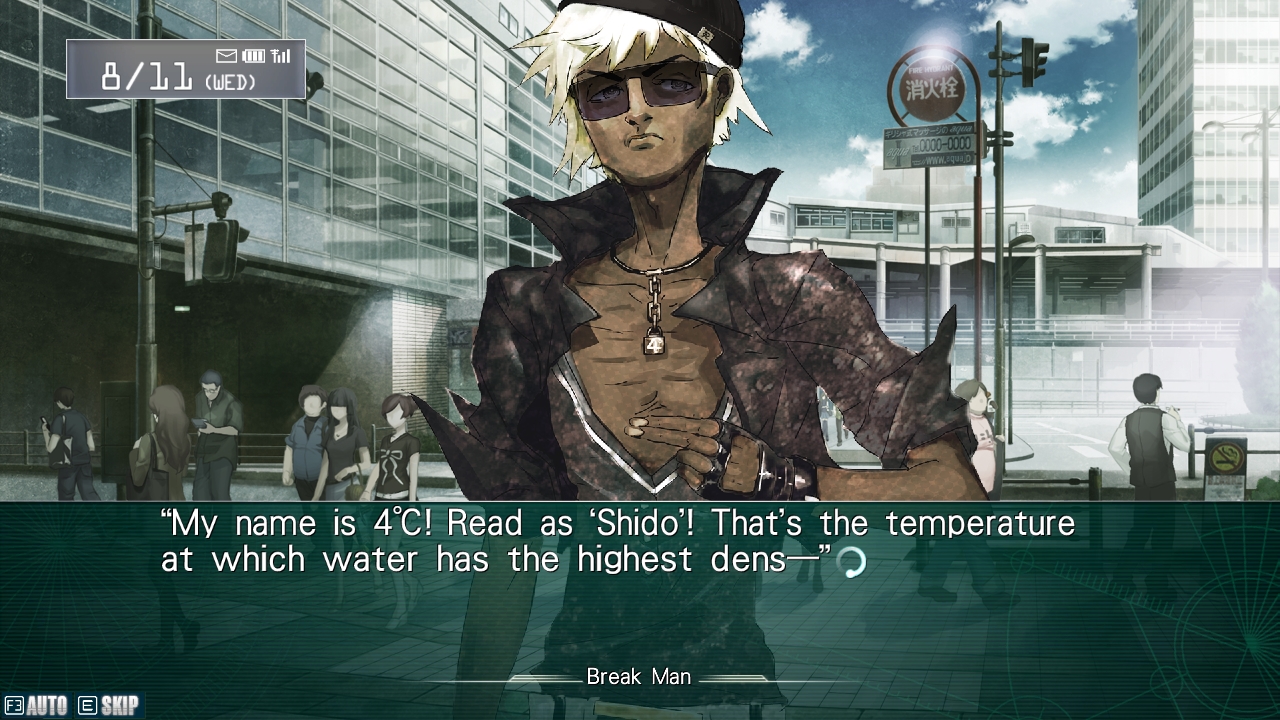
4°C, a minor side character in the original visual novel, is almost completely cut out of Elite. Save for a few voicelines indicating his presence in a certain scene, he is largely missing from the game. This also means that a short story arc connected to his character is also mostly missing from Elite.
This is a jarring change considering the fact that 4°C also appears as a more important side character in 8-Bit ADV and Linear Bounded Phenogram, the bonus games included with the Nintendo Switch and PlayStation 4/Steam versions of Steins;Gate Elite respectively. Notably, he does use his trademark “whispers of Gaia” line during his short appearance in Elite, which would at least somewhat help a new player identify the connection.
Martin:
Steins;Gate Elite is a great way for fans of the series to replay the original Steins;Gate visual novel. With its animated sequences, new interface, new opening and ending, it can offer a completely new experience for fans of Steins;Gate. While this game might not be the best choice for newcomers to the series, it is still a great game and worthwhile experience in my opinion.
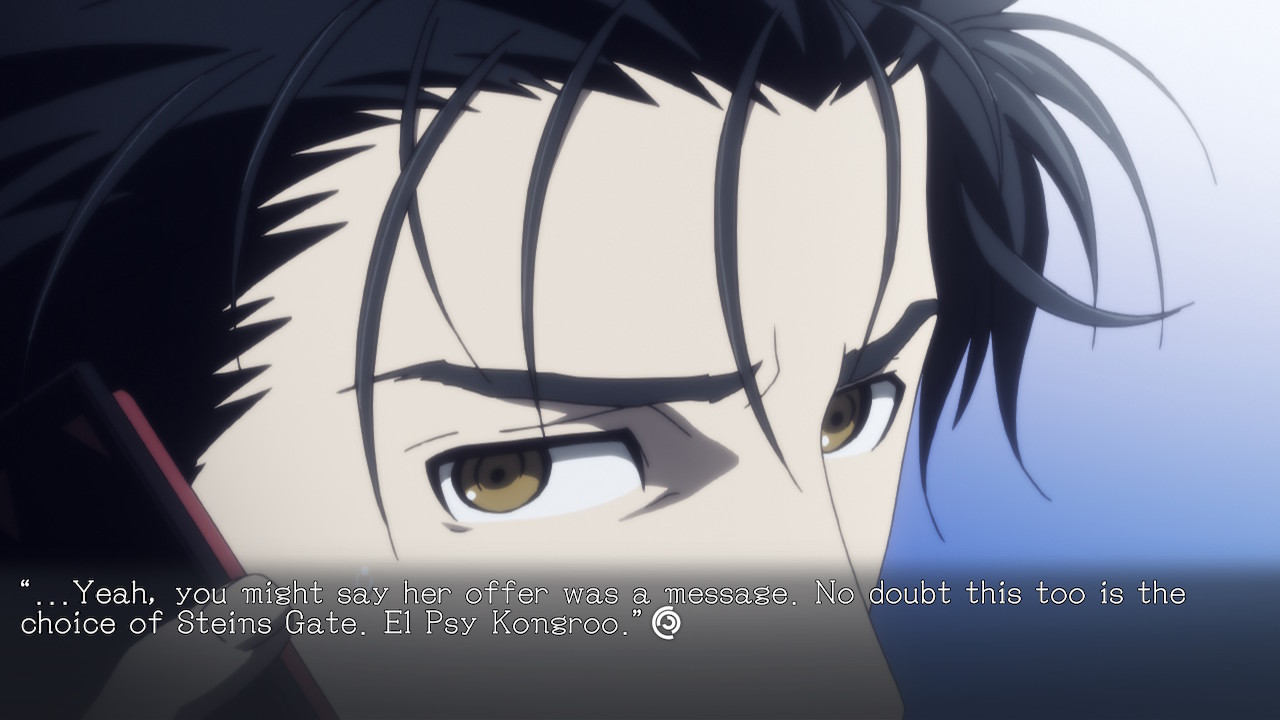
Yink:
Steins;Gate Elite is an interesting concept, executed rather well but not perfectly. Personally, I think Elite is a great way for existing fans of the series to replay the fantastic visual novel while offering a unique experience. All in all however, I don’t think Elite can replace the original Steins;Gate visual novel, as it changes quite a few events and overall just has a different atmosphere because of the lack of the unique artstyle of the original. For newcomers to the series, I would recommend reading the original Steins;Gate visual novel, and maybe checking out Elite another time for a reread.
As a long-time fan of the series I definitely enjoyed my time with Elite. The presentation with the completely new user interface design is fantastic, and is fun to look at. I liked that Elite was able to visually depict even small events that wouldn’t get a custom graphic in a typical visual novel. So, while I don’t think this is the optimal path for the Science Adventure franchise to take, I’m glad that I was able to play Steins;Gate Elite.
Fasty:
In my personal opinion, Steins;Gate Elite is not the best way for a current visual novel fan to get into Steins;Gate and its relevant series, despite the “Elite” tag. While a good idea in concept, Elite ultimately fails to deliver an experience that is objectively superior to the original visual novel.
However, there is one specific (and large) audience which I would highly recommend Steins;Gate Elite to—the anime crowd. There’s a common complaint among folks who try out a visual novel for the first time, coming from a background of watching anime: it’s too slow, or that too little appears to be going on due to the static nature of visual novel sprites and backgrounds.
For those looking for an easy and convenient transition from anime to visual novels, I would argue that Steins;Gate Elite is one of the best options out there. Not only will a player come to understand the mechanics and structure of a typical visual novel to the backdrop of anime animations, but the included Linear Bounded Phenogram bonus with PlayStation 4 and PC copies of Elite serves as a great second visual novel to play after Elite due to its traditional visual novel presentation.
In conclusion, I don’t think Elite is for everyone—for the audience that it appeals to however, I believe that Elite is definitely worth looking into.
Final Score:
7.7/10
Martin: 8/10
Fasty: 7/10
DaSH: 8/10
Yink: 8/10
Steins;Gate Elite makes some great improvements to the visual novel while sacrificing other great elements in the process. While far from perfect, Elite clearly had a lot of effort put into it, and any interested fan should definitely give it a try.


